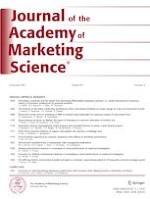11.03.2021 | Original Empirical Research
Should firms invest more in marketing or R&D to maintain sales leadership? An empirical analysis of sales leader firms
Erschienen in: Journal of the Academy of Marketing Science | Ausgabe 6/2021
EinloggenAktivieren Sie unsere intelligente Suche, um passende Fachinhalte oder Patente zu finden.
Wählen Sie Textabschnitte aus um mit Künstlicher Intelligenz passenden Patente zu finden. powered by
Markieren Sie Textabschnitte, um KI-gestützt weitere passende Inhalte zu finden. powered by
